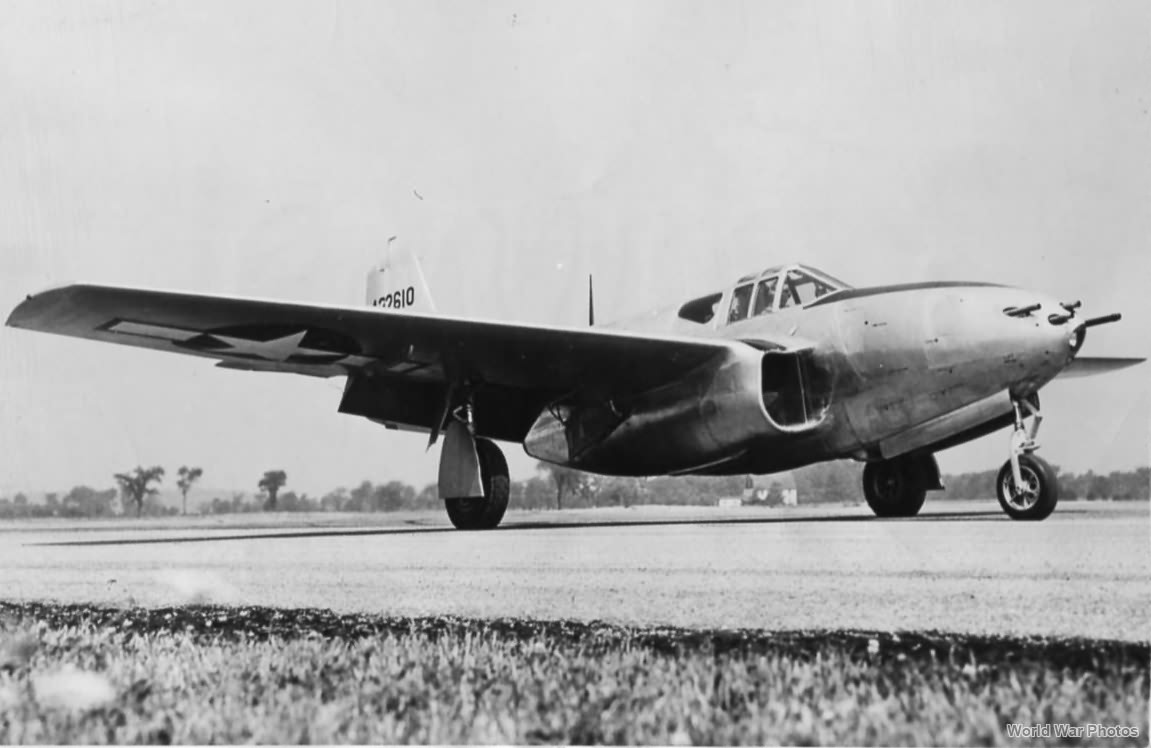On 11 March 1944, the USAAF confirmed a production contract for one hundred P-59A aircraft (serial numbers 44-22609 to 44-22708), fewer than initially expected by Bell Aircraft. Despite plans for an additional 250 aircraft, the order was later reduced. The production models differed from the service trials aircraft in several key aspects: they featured squared-off wingtips, reducing the wingspan from 49 feet to 45 feet 6 inches and the wing area from 400 square feet to 386 square feet. The control surfaces were metal-covered, the fuselage was strengthened, and the fin and rudder were redesigned with an added ventral fin. The pitot tube was repositioned, among other minor changes. The engines remained General Electric I-16s.
The first P-59A-BEs were delivered at the end of 1944. The USAAF ultimately decided to reduce the order to only thirty-nine aircraft, but fifty were built due to the high cost of scrapping nearly complete airframes. These fifty aircraft were produced in two batches: twenty P-59A-BEs (44-22609 to 44-22628) and thirty P-59B-1s (44-22629 to 44-22658). The P-59B-1s included 66 US gallon tanks in each outer wing panel, and some were later fitted with 2,000 lb st J31-GE-5 engines. By 27 August 1945, all fifty had been delivered.
Among these aircraft, one P-59A was assigned to Wright Field, while two others were sent to the AAF Proving Ground Command at Eglin Field, Florida. Another P-59A was dispatched to the Extreme Temperature Operations Unit at Ladd Field, Alaska, where it performed well. Sixteen aircraft were allocated to the 412th Fighter Group of the 4th Air Force, which included the 29th, 31st, and 445th Fighter Squadrons. Additionally, three P-59Bs were transferred to the US Navy as BuNos 64100, 64108, and 64109 (corresponding to serial numbers 44-22651, 22656, and 22657). In September 1945, one P-59B (44-22650) was sent to the NACA Lewis Research Center in Cleveland for jet thrust performance and augmentation research, remaining in use until January 1949.
The 412th Fighter Group, constituted at Muroc on 30 November 1943, was the USAAF’s first jet unit. Stationed at Bakersfield, California, its mission was to train as the first operational fighter group utilizing jet-propelled equipment and to assist other personnel or units in transitioning from conventional to jet-propelled aircraft.
